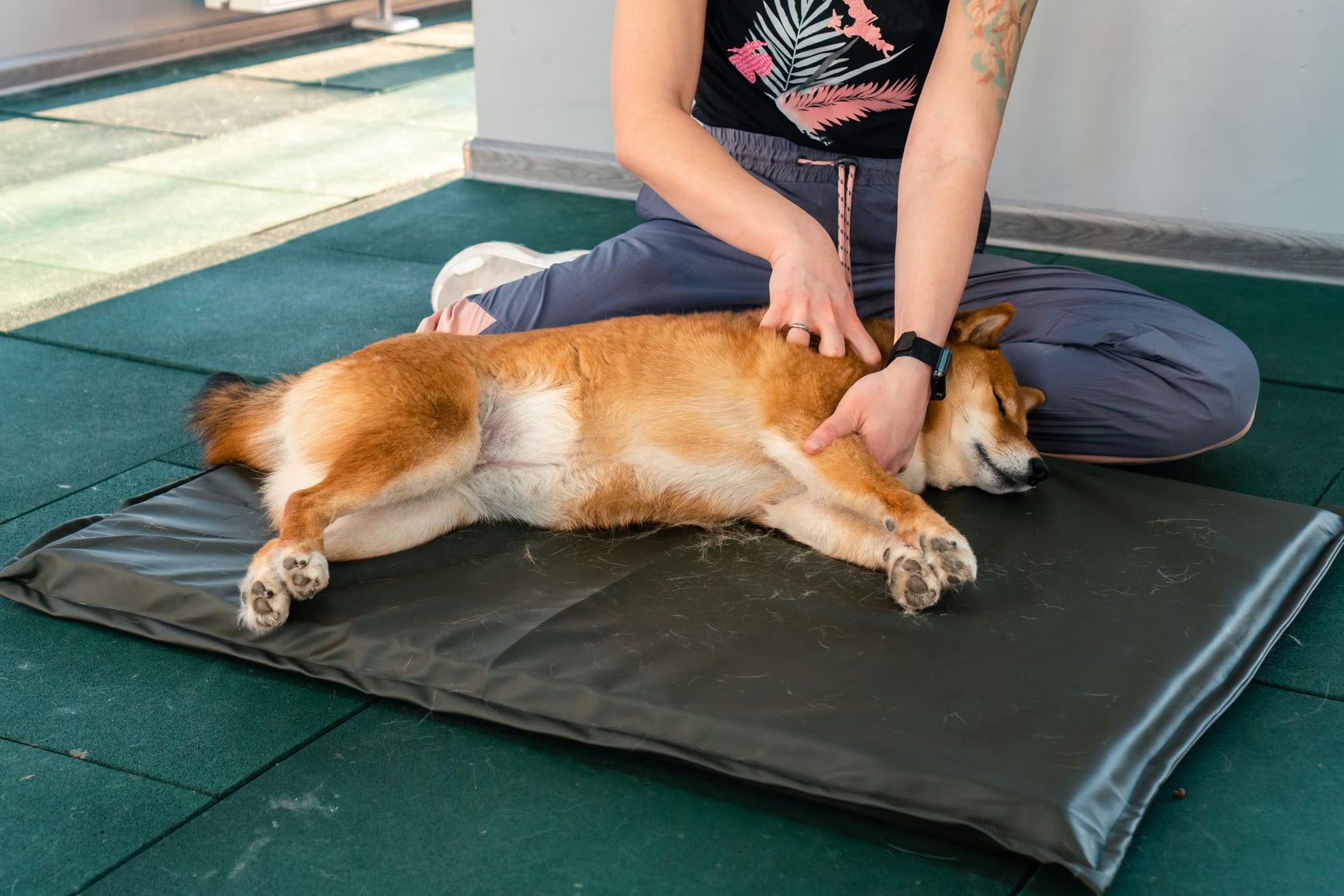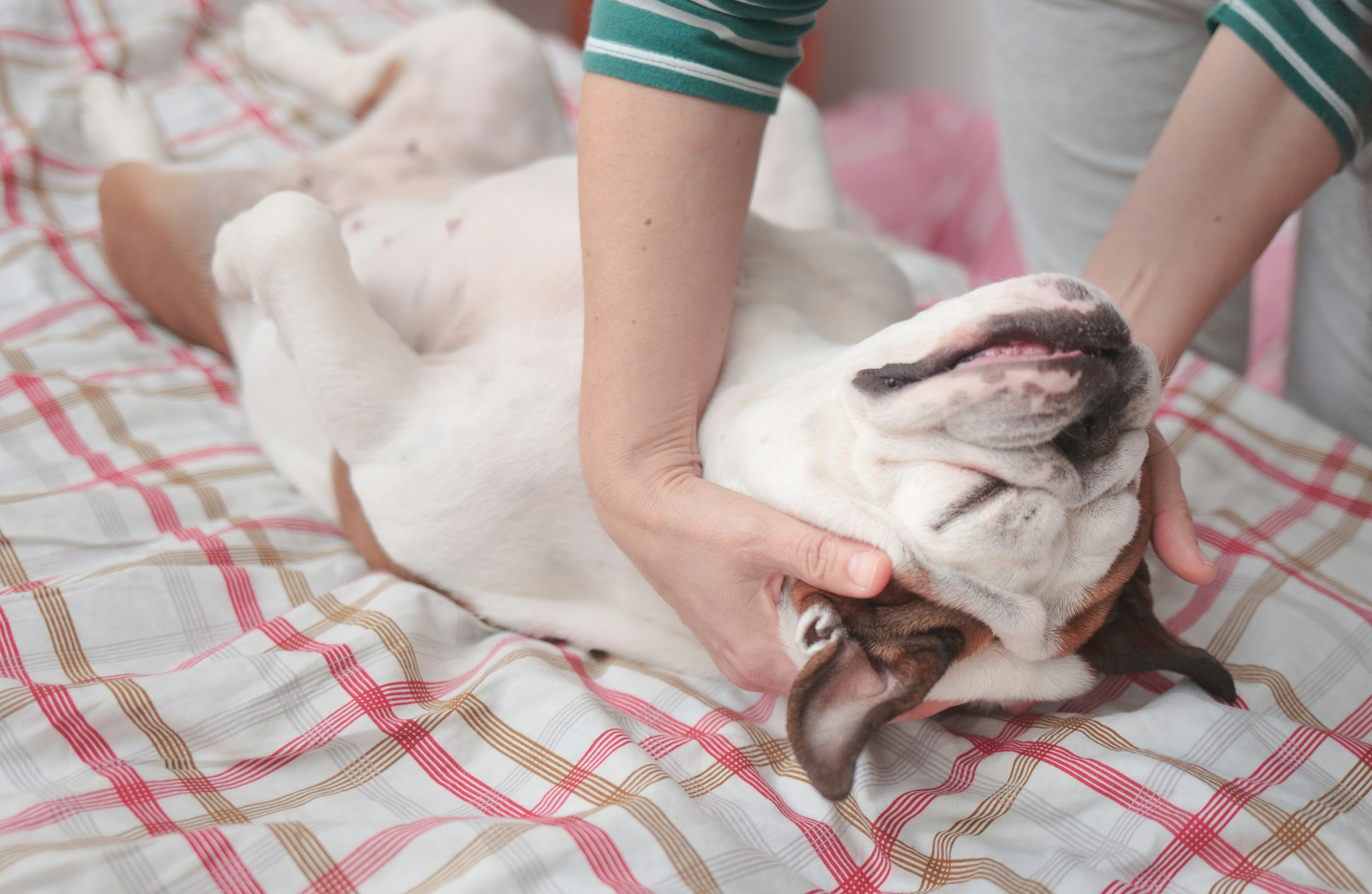Who doesn’t love a good massage?
Canine massage is gaining in popularity—and for good reason. It can serve as a relaxing activity for you and your dog and offers several potential benefits to your dog’s physical health and emotional well-being. So, let’s dig in and discuss when and how massage might be a valuable tool in your pup’s healthcare routine.
The benefits of canine massage
Massage offers numerous potential benefits to dogs, from stress reduction to therapeutic treatment of different ailments. These include:
- Improved circulation: Massage stimulates blood flow, which helps to deliver oxygen to the body’s cells and organs.
- Reduced muscle tension and stiffness: This is particularly beneficial for senior dogs, less active dogs, and working dogs who engage in regular strenuous physical activity.
- Pain relief: Massage can release endorphins (natural pain relievers) in the body, making it a potential option for managing chronic pain. In fact, in one study, 492 of 527 dogs showed a significant reduction in pain severity scores after undergoing canine massage therapy.
- Stress and anxiety reduction: Massage’s calming effect can reduce anxiety and stress levels in dogs. This relief may be helpful for pets who experience separation anxiety, noise phobias, or reactivity.
- Faster recovery from injury or surgery: Massage promotes tissue healing, which can speed recovery times. The gentle stretching and kneading of muscle fibers can also improve flexibility and reduce scar tissue formation.
- Enhanced quality of life: In the same study on pain relief, researchers concluded that dogs were significantly more likely to have a positive quality of life following canine massage treatment.
Ideal candidates for dog massage
While all dogs can benefit from massage, certain breeds and dogs with specific conditions may find it particularly beneficial. These include:
- Dogs with hip dysplasia
- Large- and giant-breed dogs that are predisposed to joint issues, such as Labradors and German Shepherds
- Senior dogs suffering from muscle atrophy and stiffness
- Working dogs or dogs that compete in canine athletics
- Dogs recovering from surgery or injury

Finding a canine massage professional
When looking for a professional to massage your pup, consider their qualifications. Reputable organizations such as the National Board of Certification for Animal Acupressure & Massage (NBCAAM) offer certifications for canine massage therapists. These certifications ensure that the practitioner has undergone specific training related to anatomy, physiology, and massage techniques tailored for dogs.
Your veterinarian may also be able to recommend a canine massage therapist. By consulting with your vet beforehand, you can ensure that any underlying health concerns are taken into account and that you’re taking a holistic approach to your pet’s overall healthcare.
At-home canine massage
Massage used to treat specific conditions is best left to the pros. But that doesn’t mean you can’t try some basic techniques at home to help your dog relax. Following are some tips to keep in mind:
- Start with a calm environment where your dog feels safe and comfortable.
- Use gentle, slow strokes, and watch how your dog reacts. You want this to be a positive and relaxing experience for them (and you!).
- Focus on areas like the head, thighs, ears, and back—but avoid pressing directly on the spine.
It’s best to start with short sessions and gradually increase the time as your dog gets used to the routine. And always keep an eye on their comfort level so you can stop if they seem uncomfortable or agitated.
Massage and the pet parent bond
Massaging your dog does more than soothe physical ailments—it also plays a crucial role in enhancing your relationship with them. Done correctly, this hands-on interaction promotes trust and communicates your care and affection, making your dog feel secure and loved. But that’s not all. Massaging your dog can also have a positive effect on your mental health. Studies have shown that just by touching a dog, your body releases oxytocin—the hormone associated with bonding and affection.
Final thoughts
Canine massage can serve as a complementary treatment for common physical ailments and alleviate your pup’s anxiety and stress. If your dog has a condition you think could be improved with massage, talk with your veterinarian about options. And then give your pup a face rub. Chances are, you both will benefit from this healing touch.
Additional resources















